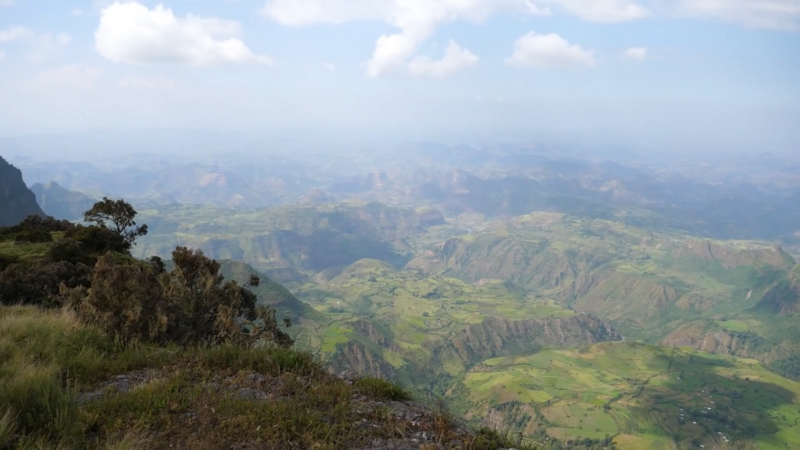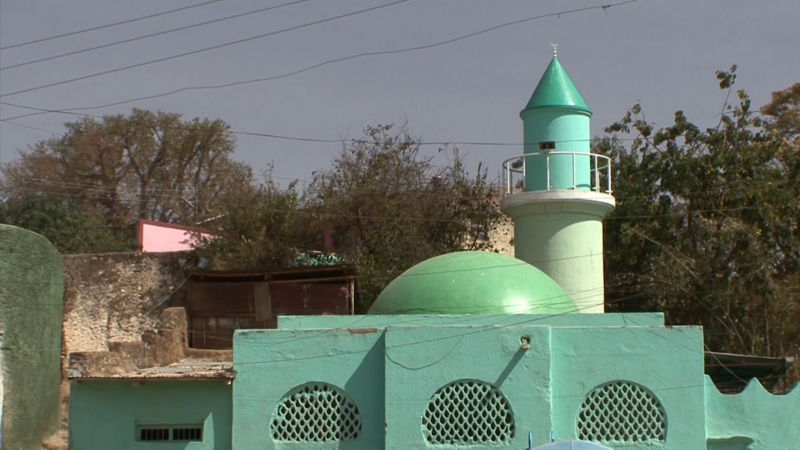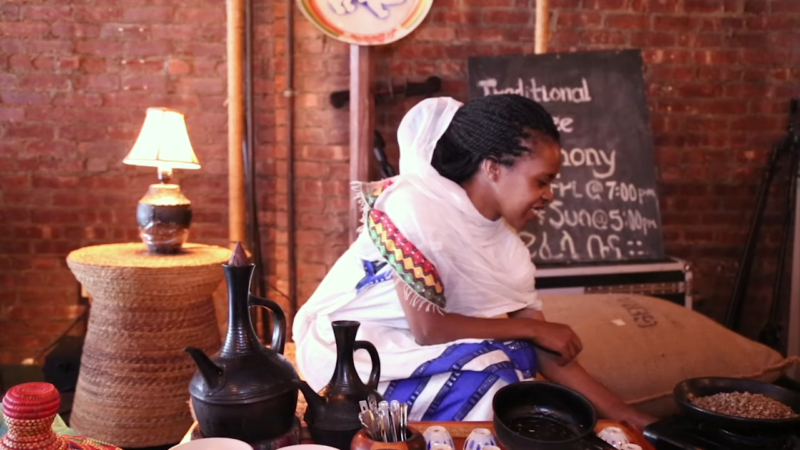Ethiopia is a country with a rich tapestry of cultures and traditions. Situated in the Horn of Africa, it boasts ancient history, stunning landscapes, and vibrant communities.
The nation’s unique calendar, diverse languages, and historical significance make it a fascinating place to explore.
Understanding the key aspects of Ethiopia can enhance your appreciation of its unique culture and heritage.
1) Addis Ababa – The Capital
Addis Ababa, the capital of Ethiopia, stands at an elevation of 7,725 feet. This makes it one of the highest capital cities in the world.
Founded in 1886 by Emperor Menelik II and Empress Taytu Betul, the name means “New Flower” in Amharic.
You can find both traditional Ethiopian culture and modern influences here. Landmarks like the National Museum and Holy Trinity Cathedral are must-visit spots. The city’s cultural institutions showcase Ethiopia’s diverse heritage.
Walking through Addis Ababa, you will notice a lively mix of old and new. Street vendors offer traditional coffee called jebena bunna, brewed in black clay pots. The climate is mild due to its high elevation, making it pleasant to explore the city year-round.
Addis Ababa also serves as a major hub for African diplomacy. It hosts the headquarters of the African Union.
2) Lalibela
Lalibela is a town in northern Ethiopia known for its unique rock-hewn churches. These churches were carved from solid rock during the 12th and 13th centuries. They offer an incredible glimpse into the history and culture of Ethiopia.
King Lalibela, after whom the town is named, is believed to have commissioned these 11 monolithic churches. Each church is intricately carved inside and out. They are a testament to the skill and dedication of medieval Ethiopian craftsmen.
The churches are still in use today and remain important pilgrimage sites. They attract both religious devotees and tourists. Pilgrims come from all over Ethiopia and beyond to visit these sacred sites.
One of the most fascinating features of Lalibela’s churches is the network of tunnels connecting them. These dark and mysterious tunnels add an element of adventure to any visit. Walking through them is like stepping back in time.
In 1978, the rock-hewn churches of Lalibela were recognized as a UNESCO World Heritage Site. This designation helps to preserve these remarkable structures for future generations.
Your visit to Lalibela will offer a unique perspective on Ethiopian Orthodox Christianity. It will also provide a deeper appreciation for the country’s rich heritage and architectural genius.
3) Simien Mountains

The Simien Mountains, located in northern Ethiopia, offer some of the most breathtaking hiking trails you’ll find. Spanning 220 square kilometers, this national park is a UNESCO World Heritage Site.
The landscape includes dramatic peaks, deep valleys, and sheer cliffs. You can experience a range of wildlife and stunning views along these routes.
Hiking here is rewarding all year round, but for the best scenery and wildlife sightings, visit from September to November. Ras Dashen, at 4,500 meters, is the highest peak and a popular trekking destination.
Trails vary from easy to challenging, making the Simien Mountains suitable for both novice hikers and experienced trekkers. You can join group hikes or hire a private guide for a more personalized experience.
Stay options include camping, huts, and lodges, allowing you to fully immerse yourself in the natural beauty of the area. Accessible from the city of Gondar, the Simien Mountains are a must-visit for anyone exploring Ethiopia.
4) Omo Valley
In southern Ethiopia lies the Omo Valley, a region rich in cultural diversity. The valley is home to several indigenous tribes, each with its own unique traditions and ways of life.
One of the largest tribes in Omo Valley is the Ari tribe. With a population of around 200,000, they excel in agriculture, growing grains, fruit, and coffee. They also keep livestock and are known for their distinctive pottery.
The Daasanach tribe live where the Omo River delta meets Lake Turkana. They have a population of about 20,000 and are primarily pastoral people. They grow maize, beans, and pumpkins during specific seasons.
The Hamar tribe is another notable group in the Omo Valley. Known for their unique hairstyles and body decorations, they practice cattle herding and agriculture. They are also famous for their bull-jumping ceremony, a rite of passage for young men.
The valley’s indigenous tribes live in harmony with the land and have maintained their traditional ways for generations. They offer a fascinating glimpse into ancient cultures and customs that continue to thrive in modern times.
5) Aksum
The ancient city of Aksum is in present-day northern Ethiopia. It was the capital of the Aksumite Empire, which lasted from around the 1st century CE to the 8th century CE.
Aksum was a major trading center, connecting the Roman Empire, the Middle East, and India. Goods like ivory, gold, and spices passed through its markets.
The Aksumite Empire is noted for its monumental obelisks, or stelae, some of which are still standing today. These structures were built to mark graves and demonstrate the city’s power.
Religion played a key role in Aksum. In the 4th century CE, the empire officially adopted Christianity. This makes Ethiopia one of the world’s oldest Christian nations.
Aksum also minted its own coins, a sign of its economic strength and international influence. These coins often featured the Christian cross, highlighting the empire’s religious identity.
While the empire declined after the 7th century, Aksum’s historical legacy continues to be a point of pride for Ethiopia.
6) Harar

Harar is one of the oldest cities in Africa, known for its ancient walls and rich history. It’s located in eastern Ethiopia and is often referred to as the fourth holiest city in Islam.
As you walk through Harar, you’ll find narrow, maze-like alleys that are easy to get lost in. These streets are filled with markets that sell everything from spices to traditional clothing. The energy in the city is vibrant and alive.
Take a tuk-tuk ride around the 3.5 km wall that surrounds the city. You’ll see the historic gates, hyena entrances, and market stalls. Donkeys and shrines are also a common sight along the way, adding to the city’s unique charm.
Harar is famous for its coffee, often considered the best in Ethiopia. Don’t miss trying a cup when you visit. The local coffee culture is a deep part of the city’s identity, and you’ll find many places to enjoy it.
Another notable aspect of Harar is the “Hyena Man.”
7) Lake Tana
Lake Tana is the largest lake in Ethiopia. It covers over 3,000 square kilometers with a depth of about 15 meters. The lake is in the Amhara Region, situated in the north-western Ethiopian Highlands.
Lake Tana is famous as the source of the Blue Nile. This river starts from the lake and flows over 1,450 kilometers to meet the White Nile in Khartoum, Sudan.
You will find rich wildlife around the lake. Hippos, crocodiles, and many bird species make their home here. The vibrant ecosystem makes it a unique spot for biodiversity.
Bahir Dar is the main city on the shore of Lake Tana. It serves as the gateway for exploring the lake and its surroundings. This city offers a convenient base for visitors.
The lake also has historical significance. It’s home to several ancient monasteries on its islands and peninsulas. These monasteries often house remarkable old manuscripts and religious artifacts.
Tourists enjoy boat trips on the lake to explore these monasteries. The serene environment offers a peaceful retreat. Remember to bring your camera, as the views are often stunning and worth capturing.
8) Coffee

Ethiopia is known as the birthplace of coffee. This legend starts with Kaldi, an Ethiopian goat herder who discovered coffee berries in the 9th century. According to the story, his goats ate the berries and became very energetic.
By the 15th century, coffee cultivation spread from Ethiopia to the Arabian Peninsula. This began coffee’s journey around the world. By the 17th century, coffee had made its way to Europe.
Ethiopia is the home of Arabica coffee, the original coffee species. Arabica is popular worldwide and makes up about 60% of global coffee production. Despite producing only a small percentage of the world’s coffee, Ethiopia is famous for its unique and diverse coffee varieties.
In Ethiopian culture, coffee plays an important role. The traditional coffee ceremony is a central social event and can take up to two hours. This ritual usually involves roasting the beans, brewing the coffee, and serving it, often led by a woman in the household.
When you think of coffee, remember its deep roots in Ethiopian history, culture, and daily life.
9) Fasil Ghebbi
Fasil Ghebbi, also known as the Royal Enclosure, is located in Gondar, in Ethiopia’s Amhara Region. It served as the royal residence for Ethiopian emperors from the 1640s to 1864. Emperor Fasilides founded this fortress in the 17th century.
The complex includes several buildings, such as the Castle of Emperor Fasilides and the Castle of Emperor Iyasu. You can also find the Library and Chancellery of Tzadich Yohannes within the enclosure.
Fasil Ghebbi is a UNESCO World Heritage Site. It showcases a mix of architectural styles, including Hindu, Baroque, and Arab influences. These styles reflect the diverse cultural interactions Ethiopia had over the centuries.
When you visit, you will notice the lush grasses and trees surrounding the site, adding to its beauty. Visitors often describe the fortress as one of the most marvelous buildings in the region.
Its historical significance makes Fasil Ghebbi a must-see. Exploring this site offers a glimpse into Ethiopia’s rich past and royal heritage.
10) Enkutatash
Enkutatash, the Ethiopian New Year, is celebrated on September 11th or September 12th in a leap year. This date aligns with the end of the rainy season and the start of a new calendar year in Ethiopia.
The celebration holds great cultural significance. It marks a time of renewal and new beginnings. You will find families coming together to share meals, offer prayers, and exchange gifts.
The streets fill with vibrant colors and festive energy. People wear traditional clothes, and songs fill the air. Children often go door-to-door singing and receiving small gifts, similar to Halloween in other cultures.
Flowers, especially yellow daisies known as adey abeba, play a big role in the festivities. The blooming of these flowers symbolizes the renewal of life and nature.
Enkutatash has ancient roots. It is believed to have been celebrated since the time of Queen of Sheba. According to tradition, she returned to Ethiopia with treasures after visiting King Solomon, and Enkutatash marks her return.
When you witness Enkutatash, you see a blend of religious and cultural practices. The holiday is celebrated by Ethiopian Orthodox Christians with church services, while others enjoy public celebrations and community gatherings.
You will learn that Enkutatash is not just about marking a new year. It’s a celebration of Ethiopian heritage, unity, and hope for the future.
Summary
Ethiopia is a land of ancient history and diverse culture. It is home to the oldest known human skeleton, Lucy, dating back over three million years.
You will find that the country is unique in many ways.
Ethiopia is famous for its coffee, believed to be the birthplace of the beloved beverage. You can enjoy rich, aromatic coffee almost everywhere you go.
Sports enthusiasts will recognize Ethiopia for its long-distance runners, who have gained international fame and won numerous Olympic medals.

